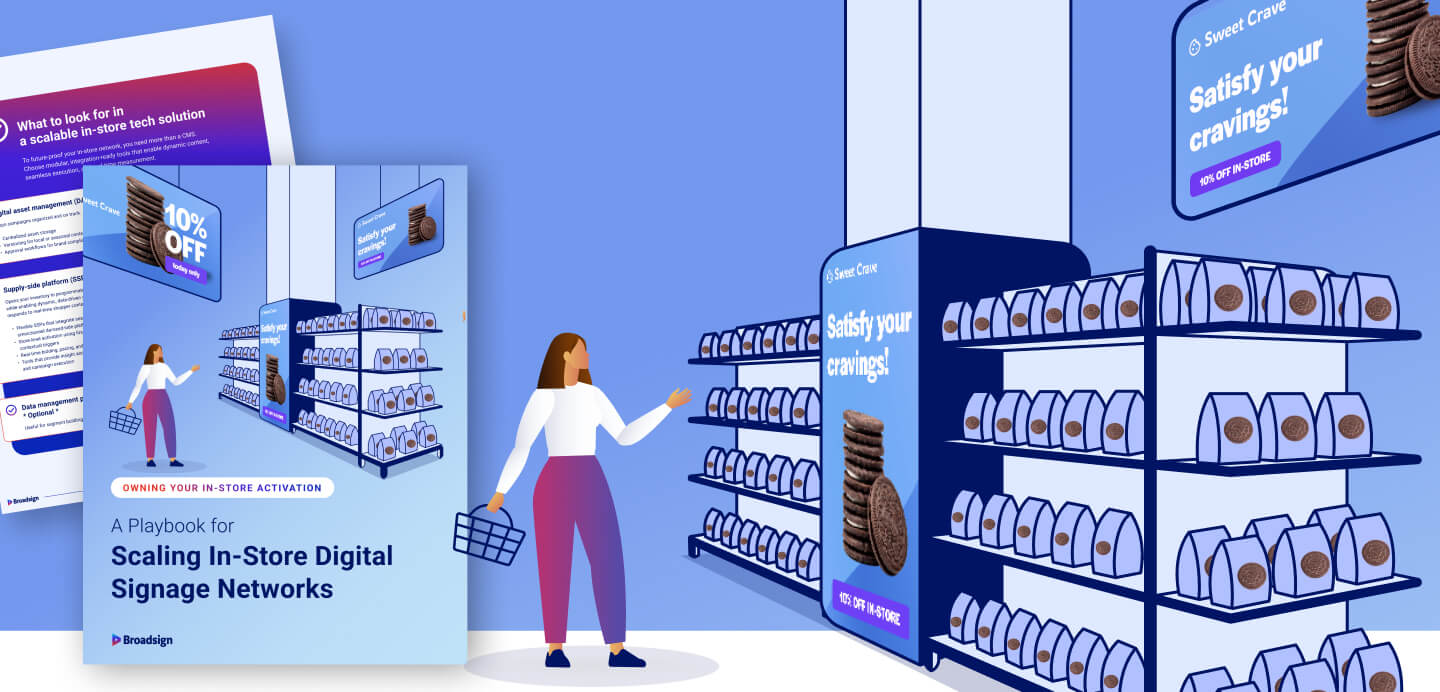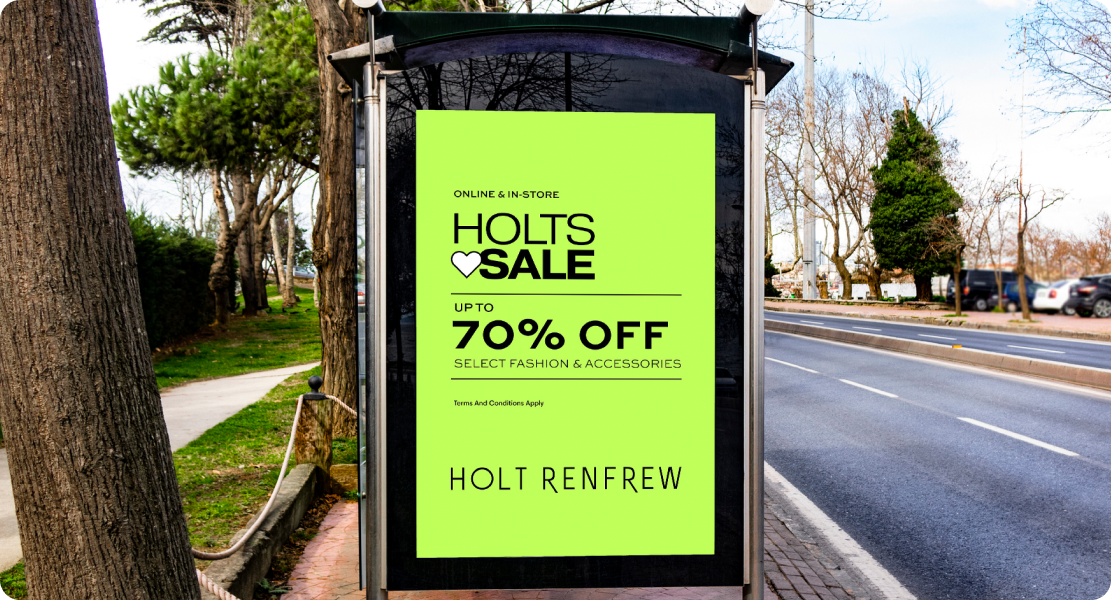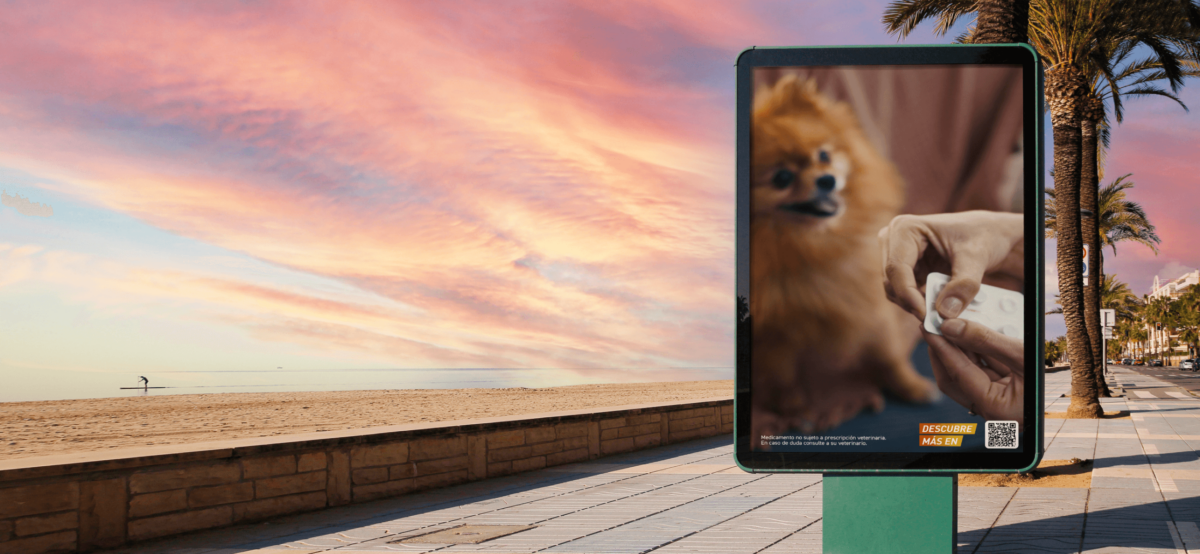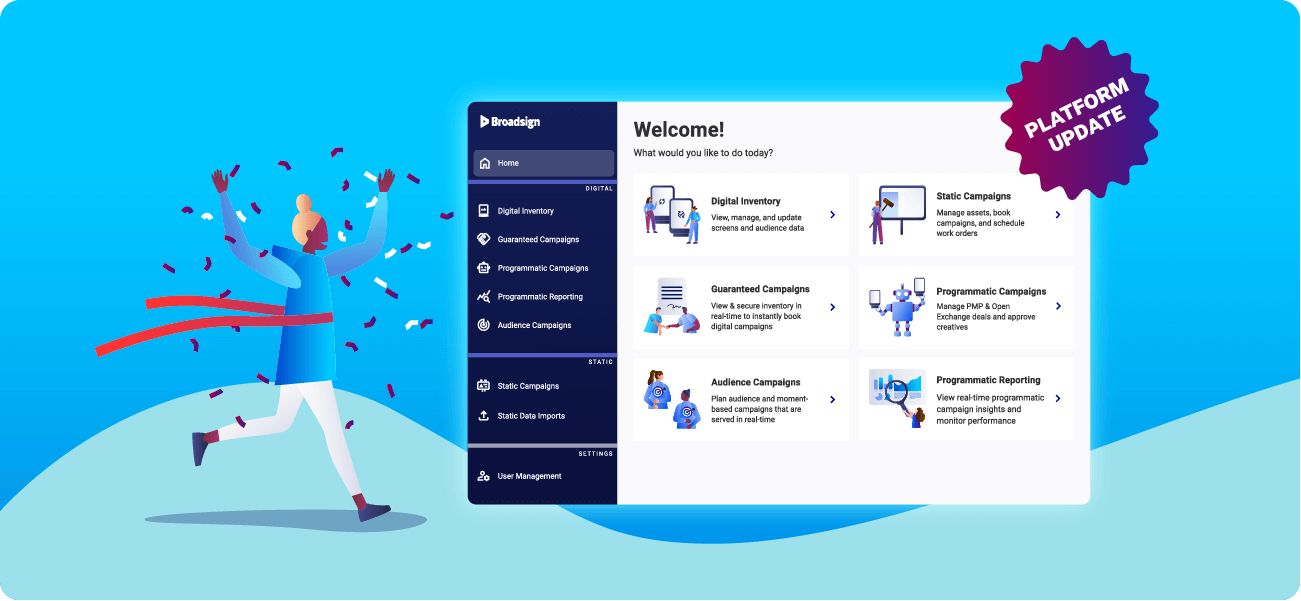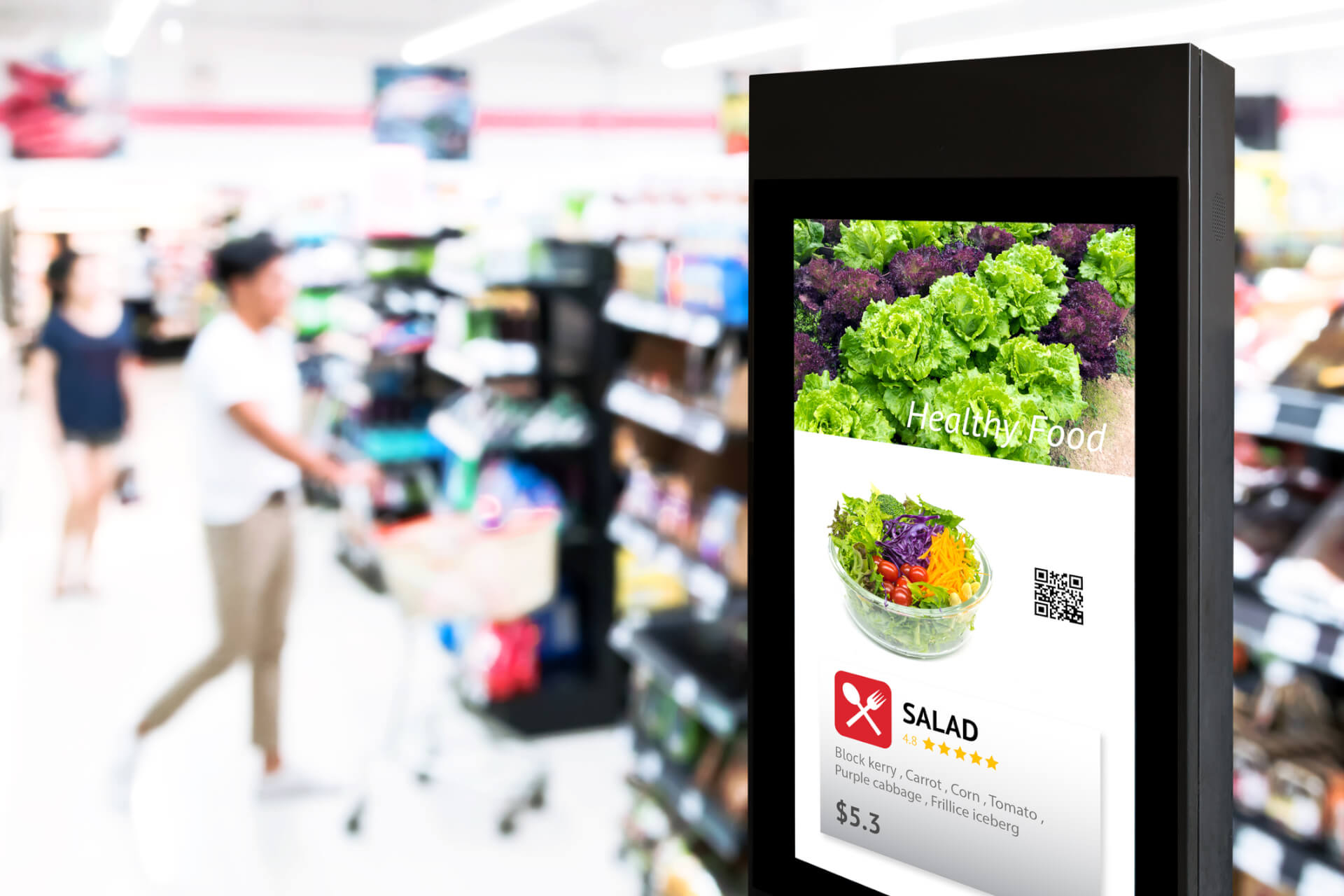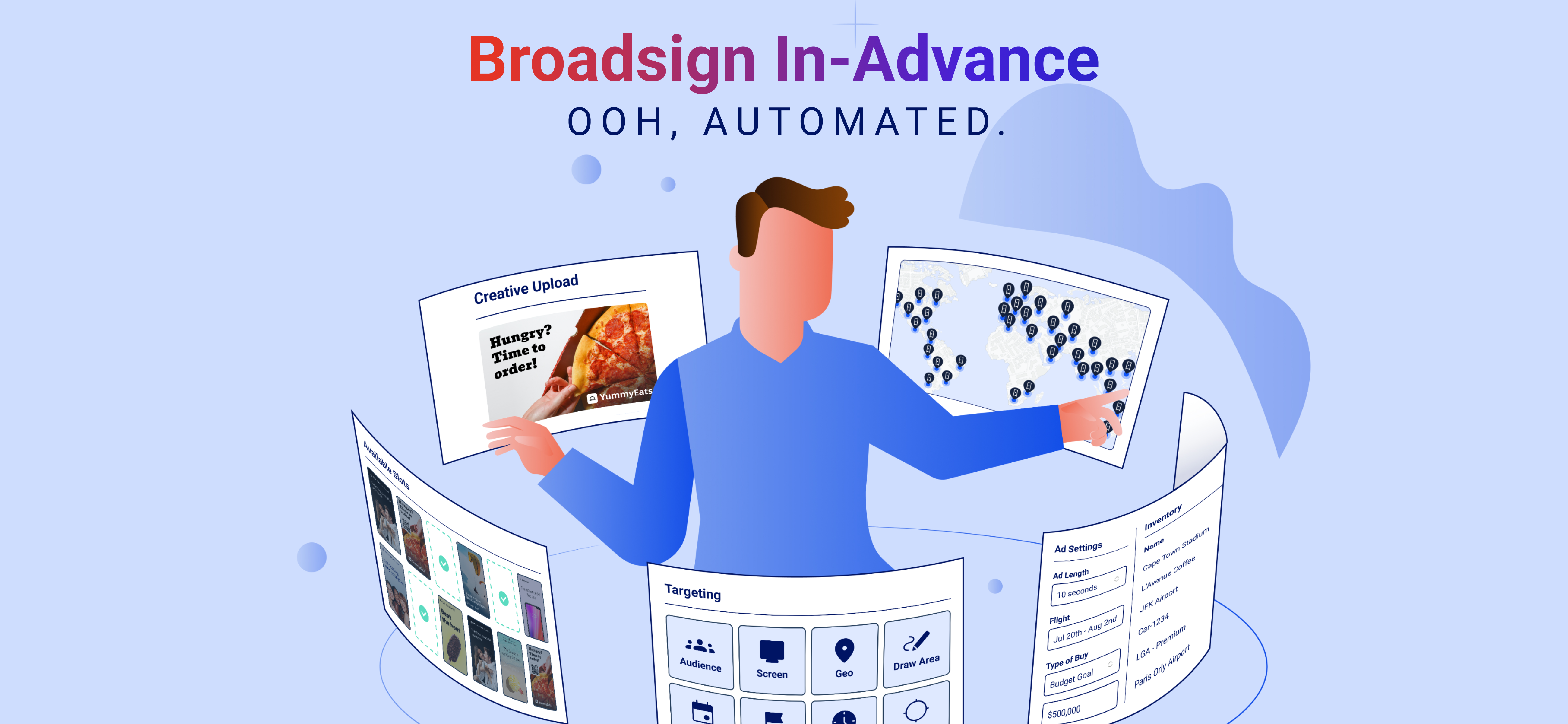| October 11, 2021
Want to scale in-store digital signage the smart way? These costly missteps could undermine long-term growth
As retailers race to meet brand demand and tap into new revenue streams, many are rapidly rolling out digital signage as part of their broader retail media networks (RMNs). But in the rush to scale, it’s easy to make early decisions that quietly erode long-term flexibility, visibility, and control.
The way you structure your network — from how screens are managed to how content is delivered and measured — directly impacts your ability to scale effectively. And when speed is prioritized over strategy, foundational cracks often surface just as brand expectations are rising.
Whether you’re installing your first in-store screens or integrating an existing network into a broader retail media strategy, your setup should serve your business, your partners, and your shoppers without compromise. That’s where Broadsign’s new eBook, Owning Your In-Store Activation: A Playbook for Scaling In-Store Digital Signage Networks, comes in: a guide to scaling smart, staying in control, and building for the long term.
The following insights — pulled directly from the playbook — spotlight three of retailers’ most common missteps when scaling in-store media. Avoiding them early can help you protect long-term flexibility, unlock greater value, and stay in control as your network grows.
Why in-store, why now?
Retail media is one of the fastest-growing channels in advertising — and the physical store is its most underleveraged asset. While ecommerce has historically commanded retail media budgets, over 80% of U.S. retail sales still happen in-store. That’s a massive opportunity to engage shoppers at the point of purchase.
That momentum is building fast:
- More than one-third of retail execs say in-store experience is a top growth priority
- U.S. investment in in-store retail media is projected to surpass $1B by 2028, outpacing growth in online retail media
To capture that value, more retailers are turning to digital signage. With screens, contextual triggers, and access to first-party customer data, they can now deliver targeted, measurable campaigns right where buying decisions are made. From dynamic digital displays to mobile integrations and real-time content delivery, in-store environments are becoming high-impact media assets.
But unlocking that value — and making it work to your advantage — takes more than tech. It takes a strategy that puts you in control.
Retailers that act now, building scalable infrastructure and aligning their networks with long-term goals, will be better positioned to drive revenue, strengthen brand partnerships, and elevate the in-store shopping experience.
What in-store retail media looks like today
Modern in-store retail media is fast, flexible, and measurable. Gone are the days of static signage and lengthy campaign rollouts. Today’s in-store environments are powered by:
- Endcap and shelf-edge displays for real-time, context-driven promotions
- Checkout and kiosk screens to deliver targeted, personalized offers
- Mobile integrations (e.g., dynamic QR codes, NFC) that bridge physical and digital touchpoints
The real power lies in data. With insights from loyalty programs, real-time signals like inventory or weather, and behaviour-based triggers (e.g. motion sensors, dwell time), retailers can automatically serve relevant content when it matters most — increasing engagement and conversion.
Common missteps that undermine retailer control
Before you scale, avoid these all-too-common traps, which can limit your flexibility, erode shopper trust, and ultimately impact your bottom line.
1. Prioritizing speed over strategic control
Turnkey solutions from third-party platforms can be appealing. They promise fast deployment, minimal lift, and a steady demand pipeline from brand advertisers. But this speed can come at the cost of flexibility. These models often involve rigid contracts, limited customization, and closed systems that don’t integrate easily with your existing operations. Those early decisions can box you in as your network scales, restricting how you deliver content, leverage data, or monetize your screens.
“The best long-term value comes from owning the data and being the front door for how retail media is bought,” says Troy Townsend, CEO of Zitcha. “This is about building enterprise value.”
2. Letting fragmentation create friction
Retailers often launch in-store media programs without standardized systems or shared goals across internal teams. The result? Fragmented networks that are hard to manage and even harder to measure. According to the Path to Purchase Institute, consumer goods companies now work with an average of six retail media networks, a number that’s expected to nearly double by 2026. That fragmentation creates a real challenge for retailers: proving performance and standing out to advertisers.
In-store adds even more complexity. Factors like screen location, shopper flow, and dwell time vary from store to store, making it hard to compare results without standardized reporting. To scale effectively, you need more than screens. You need a connected ecosystem, a unified measurement strategy, and a clear operational playbook.
3. Letting content chaos dilute the shopper experience
You’ve invested in digital screens — now what do you show on them? This is where many retailers hit a wall. Without a coordinated strategy across teams (media, marketing, merchandising, store ops), everyone competes for screen time, leading to:
- Conflicting messages
- Missed opportunities for targeted content
- Visual overload that confuses shoppers and weakens campaigns
Media campaigns are often treated like old-school packages — booked by week or location, with no real audience targeting or dynamic scheduling. That approach might fill screens, but it fails to align with shopper context or brand expectations.
“That lack of screen- or audience-level targeting creates real operational challenges,”
says Jorge Bueno, CEO of Shoppermotion. “Without the right infrastructure, the only option is to run the same ads across all screens at once.”
The result? A disjointed experience that under-delivers for everyone.
Own your growth — before someone else defines it for you
These pitfalls aren’t just operational challenges — they’re symptoms of a deeper issue: giving up too much control over how your network runs, scales, and delivers value.
Taking back control doesn’t mean building everything yourself. It means:
- Choosing partners who align with your goals
- Building infrastructure that supports flexibility and interoperability
- Retaining ownership of the data, processes, and strategy that shape your success
Retailers that define these boundaries early are better equipped to scale their networks purposefully and turn their in-store footprint into a long-term competitive advantage.
Ready to take back control?
Owning your in-store activation doesn’t mean doing it all alone. It means making smart, strategic decisions about your infrastructure, partners, and operations — and building a network that works for you, not the other way around.
Download the complete Owning Your In-Store Activation playbook to explore the key decisions that shape in-store success and learn how to structure your network for long-term, scalable growth.
